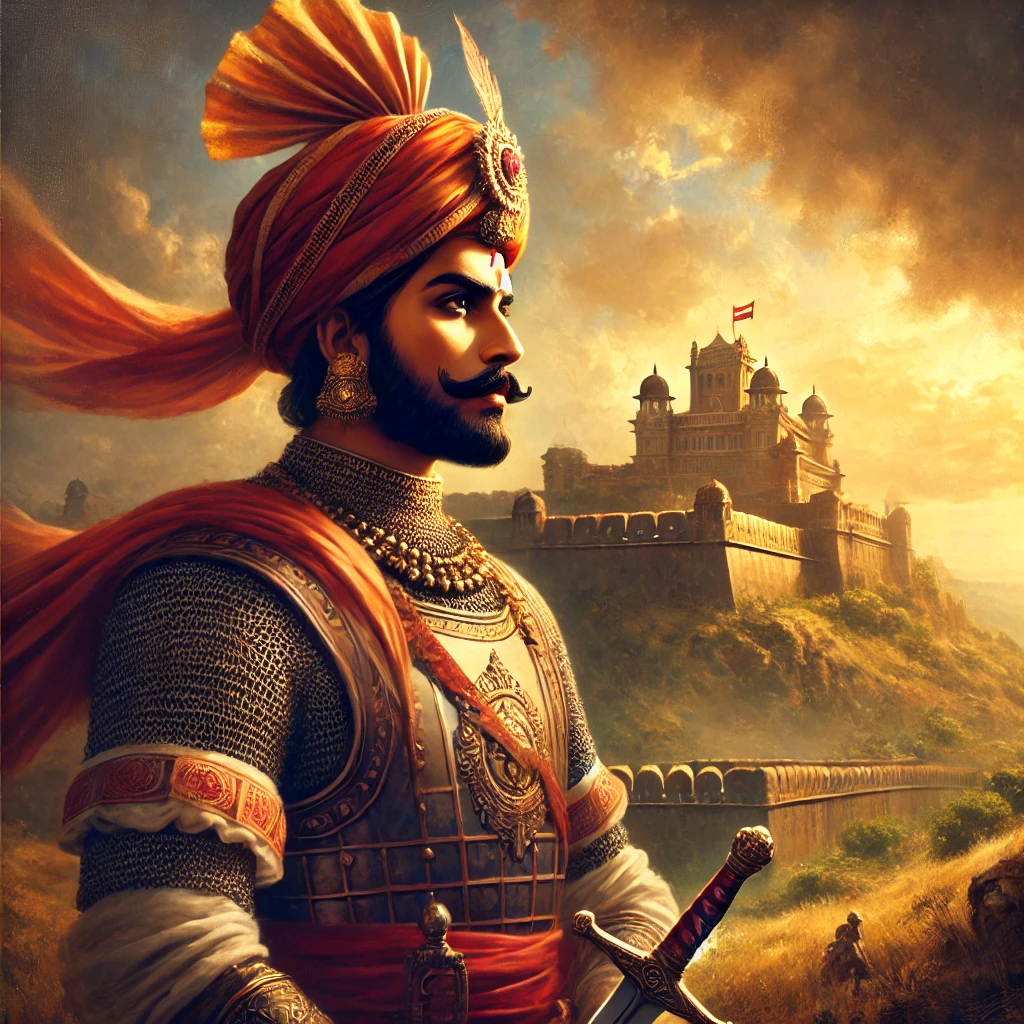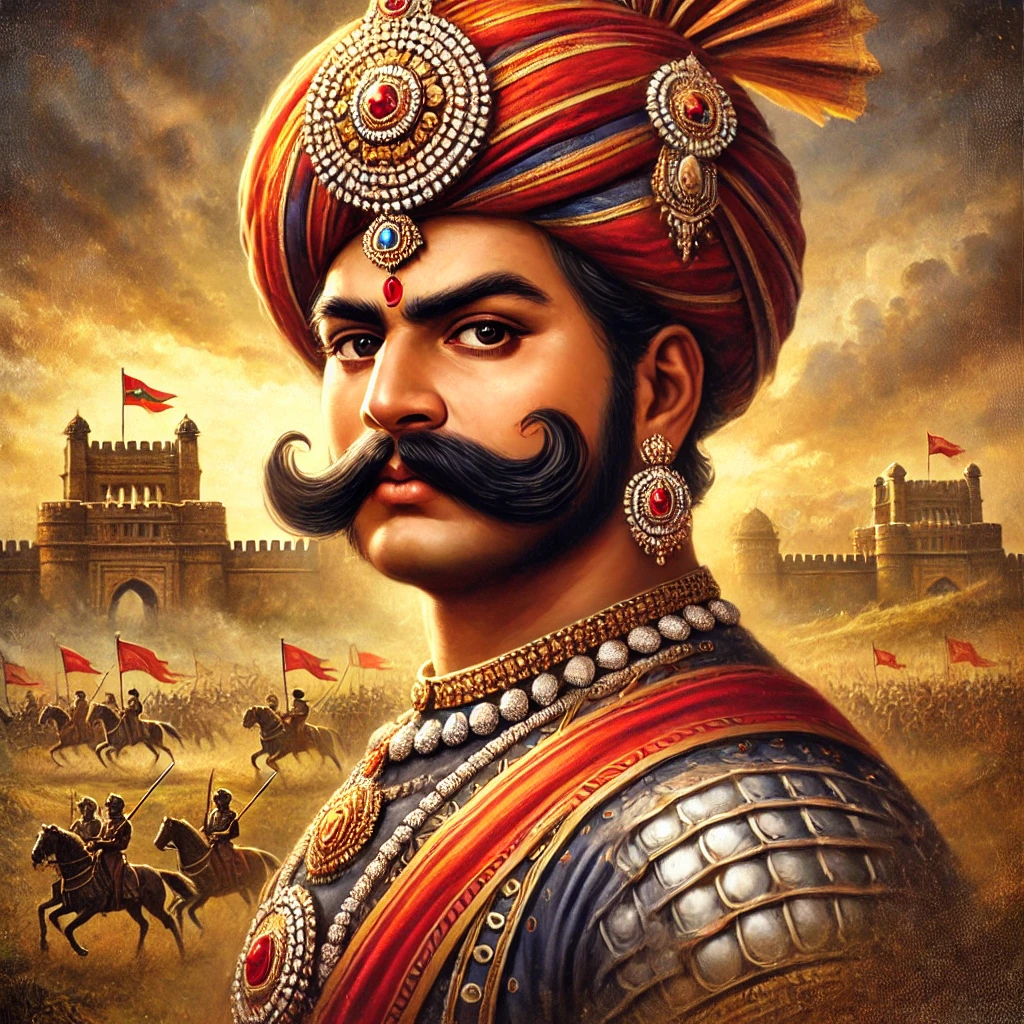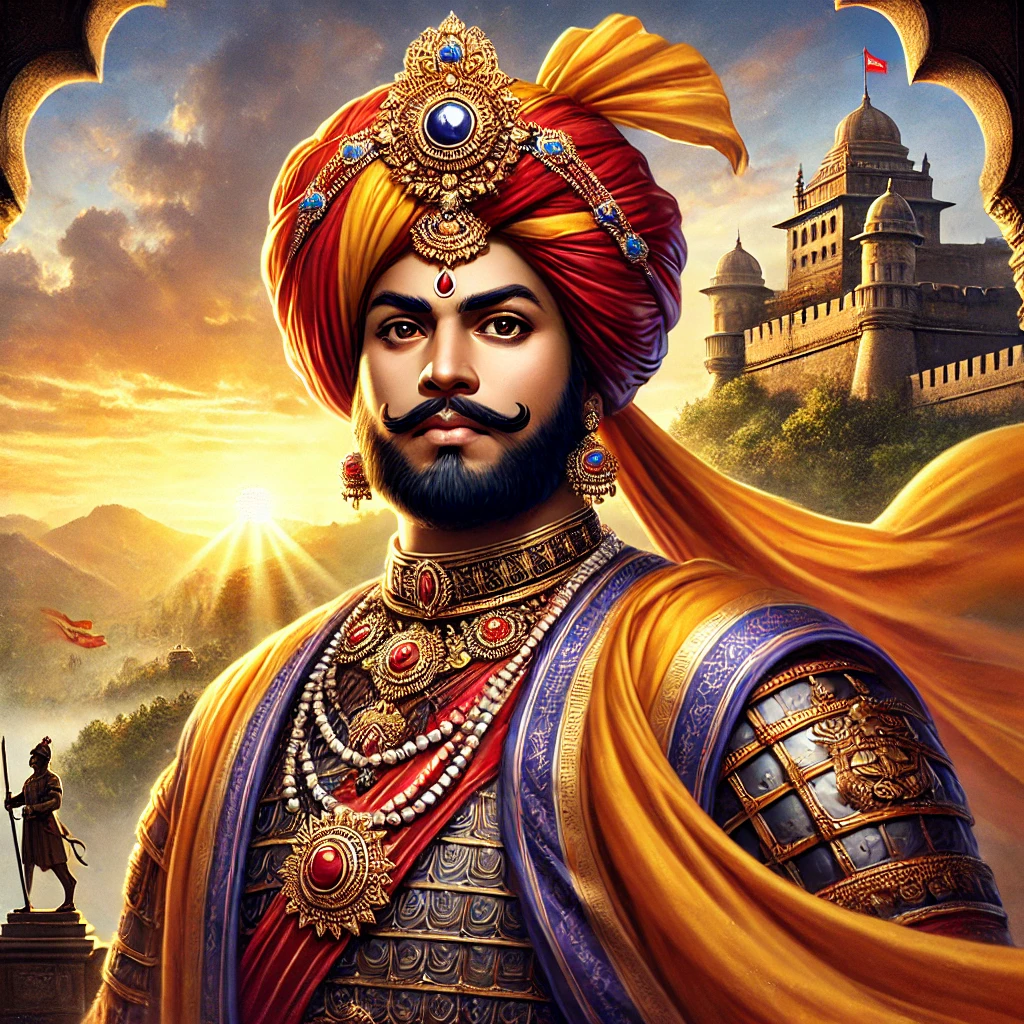Chhatrapati Shivaji Maharaj :Jayanti 2025

Shivaji I was an Indian ruler and a member of the Bhonsle dynasty. Shivaji carved out his own independent kingdom from the Sultanate of Bijapur that formed the genesis of the Maratha Confederacy. Shivaji offered passage and his service to the Mughal emperor Aurangzeb to invade the declining Sultanate of Bijapur.
Born: 19 February 1630 Shivneri Fort , Kusur
Died: 3 April 1680 (age 50 years)Raigad Fort
Spouse: Sakvarbai (m. 1656–1680), Putalabai (m. 1653–1680), Soyarabai (m. 1650–1680), Sai Bhonsale (m. 1640–1659)
Children: Chhatrapati Sambhaji Maharaj, Rajaram I · See more
Parents: Shahaji, Jijabai
Siblings: Sambhaji Shahaji Bhosale, Vyankoji Bhosale
Full name: Shivaji Shahaji Bhonsale
Chhatrapati Shivaji Maharaj The Visionary Maratha Warrior
He challenged the mighty Mughal Empire and other regional powers to establish a kingdom based on justice, freedom, and Hindu culture. His life, full of courage and determination, continues to inspire millions. CHHATRAPATI SHIVA JI MAHARAJ
Early Life and Background
Shivaji Maharaj was born on February 19, 1630, in the hill fort of Shivneri, near Junnar in present-day Maharashtra. His father, Shahaji Bhosale, was a general in the service of the Bijapur Sultanate, while his mother, Jijabai, was a deeply religious and influential figure in his life. She instilled in him a sense of pride in Hindu traditions and a vision of self-rule. Under the guidance of his mother and mentor, Dadoji Kondadev, young Shivaji learned the art of warfare, administration, and statecraft.
Coronation and Establishment of Swarajya
Shivaji’s dream of establishing a sovereign Hindu kingdom was realized when he was crowned as Chhatrapati (Emperor) in 1674 at Raigad Fort. His coronation marked the formal establishment of the Maratha Empire. He implemented a well-structured administration, encouraged trade, and strengthened the economy. His navy, one of the first of its kind in India, played a crucial role in defending the Konkan coast from foreign invaders like the Portuguese and the Siddis.
Military and Administrative Reforms
Shivaji was a pioneer in military and administrative strategies. He divided his army into various units, each led by capable commanders. His forts, numbering over 300, formed the backbone of his defense strategy. He employed the guerrilla warfare technique, known as Ganimi Kava, which involved swift attacks and strategic retreats, enabling his forces to harass and weaken much larger enemy armies.
In administration, Shivaji abolished the Jagirdari system and appointed officials based on merit. His revenue system, modeled on the principles of Raja Todar Mal, ensured that peasants were not overburdened. He promoted religious tolerance and respected all faiths, ensuring a just and fair rule for his subjects. CHHATRAPATI SHIVA JI MAHARAJ
Chhatrapati Shivaji Maharaj


The Foundation of the Maratha Empire
As a teenager, Shivaji began his campaign of capturing strategically important forts in the Deccan. His first conquest was the Torna Fort in 1645, followed by several other forts, including Purandar, Rajgad, and Kondhana. He used guerrilla warfare tactics, which later became his hallmark, to outmaneuver larger and more powerful armies. Shivaji’s growing power alarmed the Adil Shahi Sultanate of Bijapur. Afzal Khan, a ruthless general, was sent to suppress Shivaji. In a legendary encounter at Pratapgad in 1659, Shivaji cleverly killed Afzal Khan using a concealed tiger claw weapon. This victory solidified his reputation as a formidable warrior and leader. CHHATRAPATI SHIVA JI MAHARAJConflict with the Mughals
Shivaji’s growing influence brought him into direct conflict with the Mughal Emperor Aurangzeb. In 1660, Aurangzeb sent his powerful general, Shaista Khan, to capture Shivaji. However, in a daring raid on Shaista Khan’s residence in Pune, Shivaji personally led an attack, wounding the general and forcing him to retreat. In 1665, the Treaty of Purandar was signed between Shivaji and Mirza Raja Jai Singh, a Mughal commander. Shivaji had to cede some forts and agreed to serve under the Mughal Empire. However, in 1666, when he visited the Mughal court in Agra, he was arrested. Using his wit and ingenuity, he escaped in disguise inside fruit baskets, a feat that became legendary.
Naval Prowess and Expansion
Shivaji understood the importance of naval power and built a formidable fleet. He constructed naval bases at Vijaydurg, Sindhudurg, and other coastal forts to protect his kingdom from foreign invasions. His navy successfully countered threats from the Siddis of Janjira, the Portuguese, and the British, laying the foundation for a strong maritime presence in India. CHHATRAPATI SHIVA JI MAHARAJLegacy and Death
Shivaji Maharaj passed away on April 3, 1680, at Raigad Fort. His death was a great loss to the Maratha Empire, but his legacy lived on through his successors, especially his son Sambhaji Maharaj and later Peshwas, who expanded the empire across India. Shivaji’s vision of Swarajya, his military strategies, and his administrative policies had a profound impact on Indian history. He is remembered as a symbol of resistance against oppression and as a champion of Hindu culture and self-rule.Conclusion
Chhatrapati Shivaji Maharaj was not just a warrior but a visionary leader who laid the foundation for one of the most powerful empires in Indian history. His emphasis on good governance, military innovation, and naval strength made him a unique ruler. His legacy continues to inspire generations, making him one of the most revered figures in Indian history. His ideals of courage, justice, and self-rule remain relevant even today, serving as a guiding force for leadership and governance. CHHATRAPATI SHIVA JI MAHARAJ
